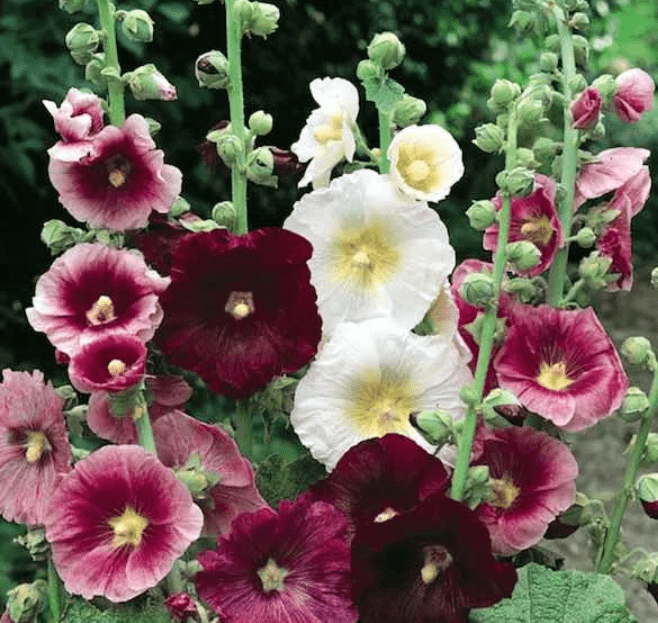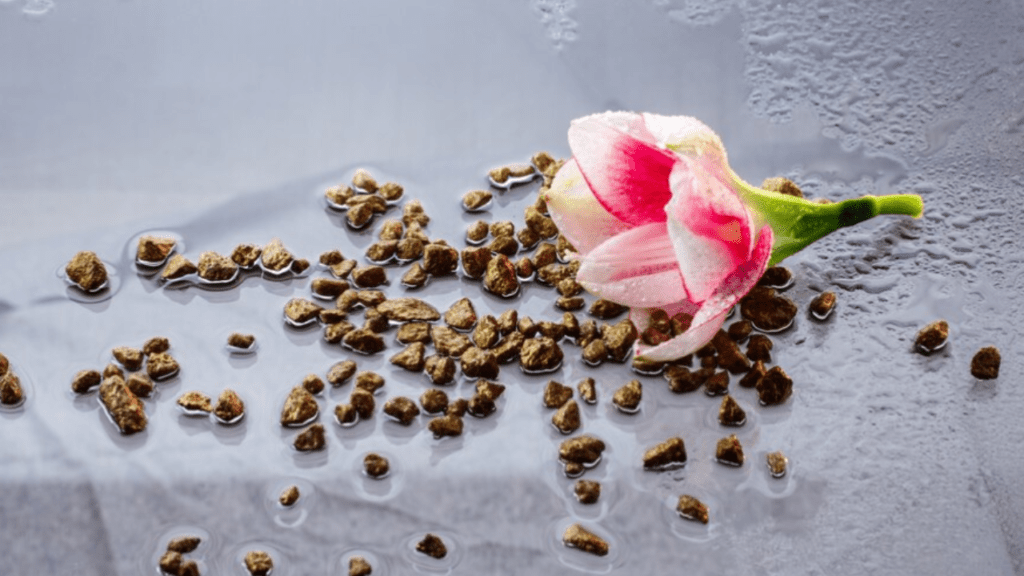
How to Successfully Grow Hollyhock Plant Seeds at Home
Hollyhock plants are a beautiful addition to any garden, and growing them from seeds at home can be a rewarding experience. In this article, we will provide you with a comprehensive guide on the best practices for successfully growing hollyhock plant seeds at home. From the best planting techniques to soil requirements and care tips, you’ll learn everything you need to know to ensure a beautiful and thriving garden. Whether you’re a seasoned gardener or just starting out, this guide will help you achieve success in growing hollyhock plants from seeds.
Growing hollyhock plant seeds at home has many benefits and is a rewarding experience. Hollyhock plants are known for their colorful and showy flowers, making them a beautiful addition to any garden. By growing hollyhock plant seeds at home, you can have a sense of accomplishment and pride in nurturing and watching them grow. Additionally, growing your own hollyhock plants from seeds allows you to have control over the growing process and the quality of the plants.
One of the key benefits of growing hollyhock plant seeds at home is the cost savings. Purchasing young hollyhock plants from a nursery can be expensive, but growing them from seeds is a cost-effective way to add beauty to your garden. In addition, growing hollyhock plants from seeds allows you to have a wider variety of options in terms of colors and forms, as nurseries may have limited selections.
Furthermore, hollyhock plants are beneficial for attracting pollinators such as bees and butterflies to your garden. Their vibrant and nectar-rich flowers are known to attract these beneficial insects, which can help in pollination and contribute to a healthy ecosystem in your garden. In addition, hollyhock plants are often used as a background or border plant, adding height and structure to the garden and creating a visually appealing landscape. Overall, growing hollyhock plant seeds at home has numerous benefits and can be a fulfilling and enjoyable gardening experience.
Table of Contents
ToggleUnderstanding Hollyhock Plants
Hollyhock plants have many benefits when grown from seeds at home. Not only is it cost-effective, but it also gives you a wider variety of options in terms of colors and forms. Additionally, hollyhock plants are known to attract beneficial pollinators such as bees and butterflies, contributing to a healthy ecosystem in your garden. They also add height and structure to the garden, creating a visually appealing landscape. Overall, growing hollyhock plant seeds at home can be a fulfilling and enjoyable gardening experience with many benefits.
Description and characteristics of hollyhock plants (Alcea spp.)
Hollyhock plants, also known as Alcea spp., are known for their vibrant and nectar-rich flowers that attract beneficial insects such as bees and butterflies. These insects can help in pollination and contribute to a healthy ecosystem in your garden. In addition to their ecological benefits, hollyhock plants are often used as a background or border plant, adding height and structure to the garden and creating a visually appealing landscape. When grown from seeds at home, hollyhock plants offer a wider variety of options in terms of colors and forms, making it a cost-effective and customizable choice for your garden. Overall, growing hollyhock plant seeds at home can be a fulfilling and enjoyable gardening experience with numerous benefits.
Benefits of growing hollyhocks in the garden
Hollyhock plants, also known as Alcea spp., have many benefits when grown in the garden. These plants are known to attract beneficial pollinators such as bees and butterflies, contributing to a healthy ecosystem in your garden. They also add height and structure to the garden, creating a visually appealing landscape. Additionally, growing hollyhock plants from seeds at home offers a wider variety of options in terms of colors and forms, making it a cost-effective and customizable choice for your garden. Overall, growing hollyhock plant seeds at home can be a fulfilling and enjoyable gardening experience with many benefits.
Overview of common hollyhock varieties
Hollyhock plants come in a variety of colors and forms, making them a popular choice for many gardens. Some common hollyhock varieties include the tall single-flowered hollyhock, which can reach up to 8 feet in height and come in a range of colors including pink, red, white, and yellow. There are also double-flowered hollyhocks with densely packed petals in shades of pink, red, and white. Another variety is the black hollyhock, which has dark purple to almost black flowers that add a dramatic touch to any garden. The Indian Spring hollyhock variety features large, frilly flowers in a mix of colors, while the Queeny Purple hollyhock has deep purple blooms that are sure to stand out in any garden. With so many options to choose from, there is a hollyhock variety to suit every garden and gardener’s preferences.
Choosing the Right Hollyhock Plant Seeds
Types of hollyhock seeds available (single-flowered, double-flowered, etc.)
When it comes to growing hollyhock plants from seeds, there are several different types of seeds available to choose from. The most common varieties include single-flowered hollyhocks, which produce tall, single-petal flowers in a range of colors such as pink, red, white, and yellow. Double-flowered hollyhocks are another popular option, known for their densely packed petals in shades of pink, red, and white. Black hollyhocks offer a dramatic touch to any garden with their dark purple to almost black flowers, while Indian Spring hollyhocks feature large, frilly flowers in a mix of colors. Queeny Purple hollyhocks have deep purple blooms that stand out in any garden. With such a wide variety of hollyhock seeds available, there is sure to be a type that suits your garden and personal preferences. As you choose the right hollyhock plant seeds for your garden, consider the colors, sizes, and overall look you want to achieve.
Tips for selecting high-quality seeds
- Look for seeds from reputable suppliers: Choose seeds from well-known and reputable suppliers to ensure that you are getting high-quality seeds that are more likely to produce healthy, vigorous plants.
- Consider the seed packaging: Check the seed packaging for information on the seed variety, germination rate, and any testing or certifications that may indicate the quality of the seeds.
- Check the seed viability: Look for seeds that have a high germination rate and viability. You can often find this information on the seed packaging or from the supplier.
- Consider your growing conditions: Choose seeds that are well-suited to your local climate and growing conditions. Some seeds may be better for specific growing zones or soil types, so consider these factors when selecting your seeds.
- Look for signs of freshness: Fresh seeds are more likely to germinate and produce healthy plants. Look for seeds that are plump, full, and free from damage or signs of mold or decay.
By following these tips, you can select high-quality seeds that are more likely to result in successful and thriving plants in your garden.
Where to purchase hollyhock plant seeds (local nurseries, online seed suppliers)
When looking to purchase hollyhock plant seeds, there are a few options to consider. Local nurseries are a great place to start, as they often carry a variety of seeds and plants that are well-suited to the local climate and growing conditions. You can also check online seed suppliers, which may offer a wider selection of hollyhock seed varieties and the convenience of ordering from home. When purchasing seeds, it’s important to consider the seed packaging and look for information on the variety, germination rate, and seed viability. It’s also important to consider your specific growing conditions, such as climate and soil type, to ensure the seeds you choose are well-suited to your garden. Look for signs of freshness, such as plump and undamaged seeds, to increase the likelihood of successful germination and healthy plant growth. By considering these factors, you can find high-quality hollyhock seeds to start your garden.
Preparing for Planting Hollyhock Plant Seeds
Ideal soil conditions and preparation for hollyhocks
Before planting hollyhock seeds, it’s important to prepare the soil to provide the best growing conditions for these beautiful flowers. Hollyhocks prefer well-draining soil with a slightly acidic to neutral pH. To prepare the soil, start by clearing the area of any debris, rocks, or weeds. Loosen the soil to a depth of about 12 inches and mix in some organic matter, such as compost or well-rotted manure, to improve the soil texture and fertility. This will provide the hollyhock seeds with the nutrients they need to grow strong and healthy. Once the soil is prepared, you can sow the hollyhock seeds and gently cover them with a thin layer of soil. Water the area gently to keep the soil moist, and soon you’ll see your hollyhocks begin to sprout and grow. With the right soil conditions and preparation, your hollyhocks will thrive and bring beauty to your garden.
Selecting the right location for planting
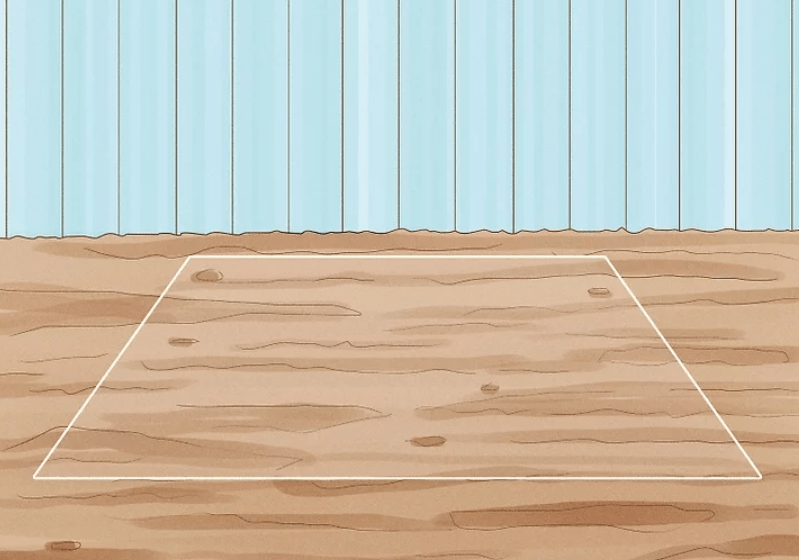
hollyhock seeds is crucial for their success. Hollyhocks thrive in full sun, so it’s important to choose a location in your garden that receives at least 6-8 hours of direct sunlight each day. Additionally, hollyhocks prefer well-draining soil, so avoid planting them in low-lying areas that tend to collect water. When selecting a location, consider the height of hollyhocks, as they can grow quite tall. Plant them towards the back of your garden beds or along fences or walls where they can provide a beautiful backdrop for other plants. By selecting the right location for planting hollyhock seeds, you can ensure that they receive the sunlight and soil conditions they need to grow and thrive in your garden.
Tools and materials needed for planting hollyhock seeds
include a garden trowel or shovel, a watering can or hose, high-quality potting soil, and hollyhock seeds. You’ll also need a rake or hoe to prepare the soil and a garden marker to identify where you’ve planted your hollyhock seeds. Additionally, consider adding some organic fertilizer to the soil to provide essential nutrients for your hollyhocks as they grow. With the right tools and materials, you can ensure that your hollyhock seeds have the best possible start in your garden.
How to Plant Hollyhock Plant Seeds
Step-by-step guide to sowing seeds indoors
Seed starting mix preparation
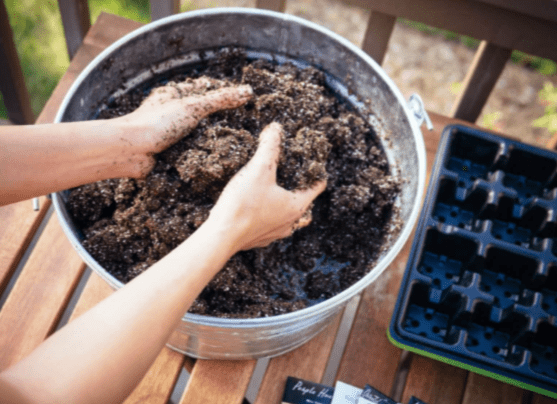
To prepare for planting hollyhock seeds, it’s important to start with a high-quality seed starting mix. This mix should be light and well-draining, which will help prevent the seeds from becoming too wet and potentially rotting. You can purchase a pre-made seed starting mix at a garden center, or you can create your own by combining equal parts peat moss, vermiculite, and perlite. Once you have your seed starting mix ready, fill your seed trays or pots with the mix, leaving a little space at the top for the seeds. This will provide the seeds with the nutrients and environment they need to germinate and grow into healthy, vibrant hollyhock plants.
Sowing seeds in trays or pots
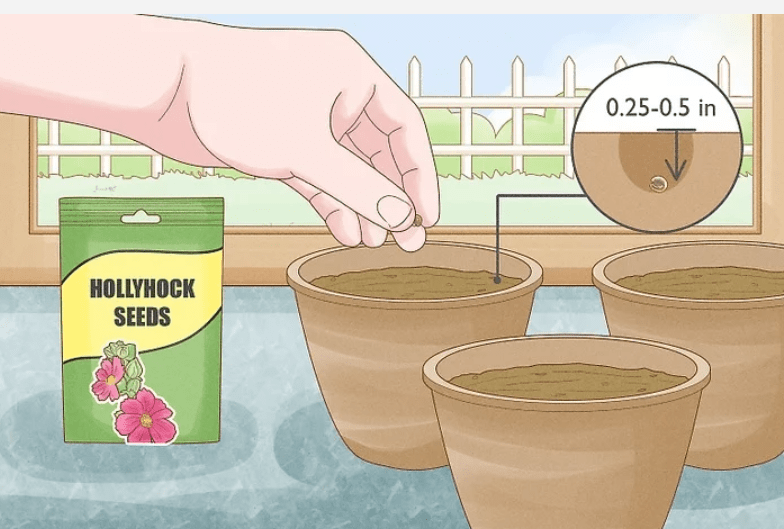
is a simple and effective way to start hollyhock seeds indoors. Begin by filling your seed trays or pots with the prepared seed starting mix, leaving a little space at the top for the seeds. Then, sprinkle the hollyhock seeds on top of the soil, spacing them about 12 inches apart. Gently press the seeds into the soil, but do not cover them with additional soil, as hollyhock seeds require light to germinate. After planting the seeds, lightly water the soil to ensure that it is evenly moist. Place the trays or pots in a warm, sunny location, and continue to water the soil regularly to keep it moist. In about 7-14 days, you should start to see the hollyhock seeds germinate and sprout. Once the seedlings have developed their first set of true leaves, you can transplant them into larger pots or directly into your garden. With the right care and attention, your hollyhock seeds will grow into beautiful and vibrant plants that will enhance the beauty of your garden.
Watering and covering for germination
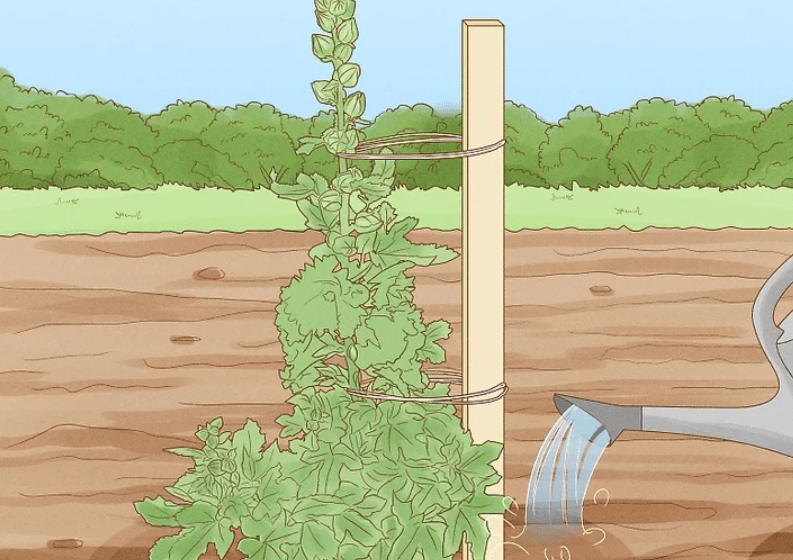
are important steps in the process of growing plants from seeds. When planting hollyhock seeds, it’s important to water the soil after planting to ensure it is evenly moist. However, hollyhock seeds require light to germinate, so it’s important not to cover them with additional soil. This will allow the seeds to receive the light they need to sprout. After planting, it’s important to place the trays or pots in a warm, sunny location and continue to water the soil regularly to keep it moist. With consistent care and attention, hollyhock seeds will germinate in about 7-14 days and will grow into beautiful plants. Remember to transplant the seedlings into larger pots or directly into the garden once they have developed their first set of true leaves. By following these steps, you can ensure the successful germination and growth of your hollyhock seeds.
Caring for Hollyhock Seedlings
Watering and fertilization requirements for young hollyhock plants
After your hollyhock seeds have germinated and grown into seedlings, it’s important to continue providing them with the right care to ensure their healthy growth. When it comes to watering, young hollyhock plants require regular moisture, so be sure to water the soil around the plants consistently. However, it’s important not to overwater, as excessive moisture can lead to root rot. As for fertilization, young hollyhock plants can benefit from a balanced, all-purpose fertilizer. You can apply this fertilizer every 4-6 weeks during the growing season to support the healthy growth and development of your hollyhock plants. With proper watering and fertilization, your hollyhock seedlings will continue to thrive and grow into beautiful, vibrant plants.
Providing adequate sunlight and temperature conditions
is crucial for the healthy growth of hollyhock seedlings. These plants thrive in full sun, so it’s important to place them in a location where they can receive at least 6 hours of sunlight per day. Additionally, hollyhock plants prefer moderate temperatures, so it’s best to keep them in an area with temperatures ranging from 60 to 70 degrees Fahrenheit. By providing the right sunlight and temperature conditions, you can ensure that your hollyhock seedlings will grow strong and healthy as they continue to develop into beautiful flowers.
Thinning seedlings and transplanting as needed
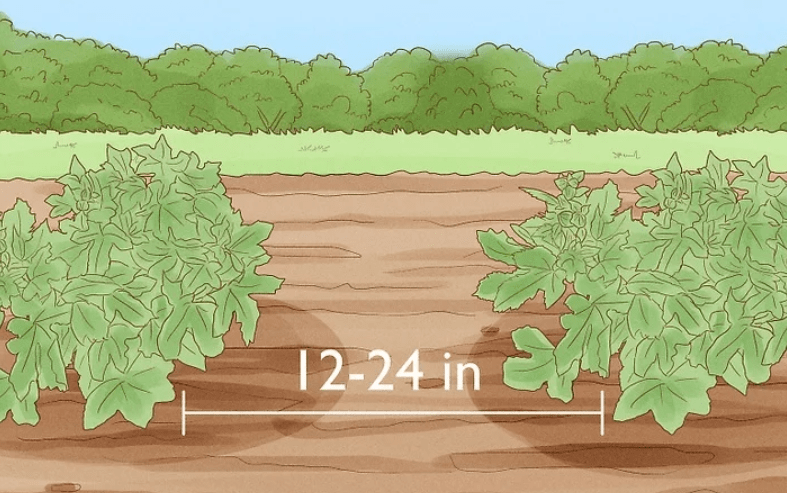
is an essential part of caring for hollyhock seedlings. When the seedlings have grown a few sets of true leaves, it’s important to thin them out to ensure that each plant has enough space to grow properly. Transplanting may also be necessary if the seedlings have outgrown their original containers. When thinning seedlings, carefully remove the weaker or excess plants, leaving only the healthiest and strongest ones to continue growing. If transplanting is necessary, gently remove the seedlings from their original containers and replant them in larger pots or directly into the garden. By thinning seedlings and transplanting as needed, you can help your hollyhock plants thrive and reach their full potential.
Protecting seedlings from pests and diseases
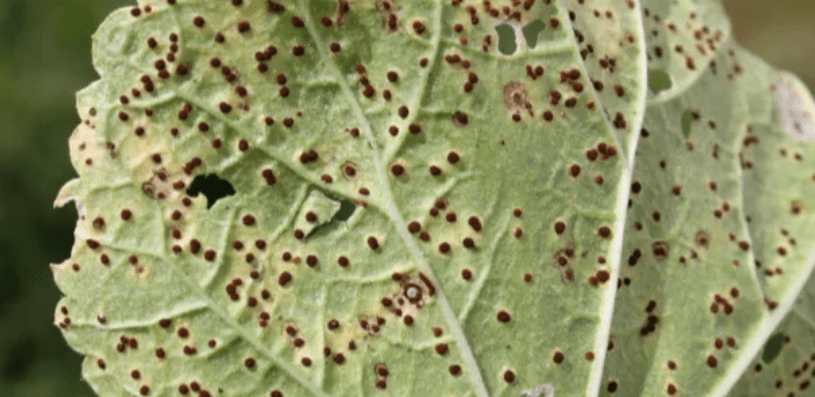
is crucial for their survival. One way to protect your hollyhock seedlings from pests and diseases is to keep the area around them clean and free of debris. This can help prevent the spread of harmful organisms that can damage the plants. Additionally, you can use natural pest control methods such as introducing beneficial insects or using organic pesticides to keep pests at bay. It’s also important to monitor your seedlings regularly for any signs of disease and take prompt action if you notice any issues. By taking these proactive measures, you can help ensure that your hollyhock seedlings remain healthy and strong as they continue to grow.
Maintaining Mature Hollyhock Plants
Ongoing watering and feeding schedule for established plants
is crucial to their health and vitality. Once your hollyhock plants have become established, it’s important to continue providing them with the proper care they need to thrive. This includes watering them regularly, especially during dry periods, and ensuring that they receive enough moisture to keep their roots healthy and strong. Additionally, feeding your mature hollyhock plants with a balanced fertilizer can help promote healthy growth and vibrant blooms. It’s important to follow a consistent watering and feeding schedule to ensure that your established hollyhock plants continue to flourish and remain resilient against environmental stressors. By providing ongoing care and maintenance, you can help your mature hollyhock plants reach their full potential and enhance the beauty of your garden.
Pruning and deadheading for prolonged blooming
is an essential part of maintaining healthy and vibrant hollyhock plants. Regular pruning helps to promote new growth and remove any dead or damaged foliage, which can improve the overall appearance of the plant. Deadheading, or removing spent flowers, encourages the plant to produce new blooms and prolongs the flowering period. By consistently pruning and deadheading your hollyhock plants, you can help them to continue blooming and thriving throughout the growing season. This will also help to prevent the plant from becoming overgrown and ensure that it remains healthy and visually appealing. Overall, regular maintenance and care, including pruning and deadheading, are key to promoting prolonged blooming and the overall health of your hollyhock plants.
Supporting tall hollyhock stems with stakes or trellises
is crucial to preventing them from toppling over in strong winds or heavy rain. Tall hollyhock plants can become top-heavy and may require additional support to keep them standing upright. Using stakes or trellises to support the stems can help prevent damage to the plants and ensure that they continue to grow and bloom without being weighed down or broken by adverse weather conditions. By providing this extra support, you can help your hollyhock plants to thrive and maintain their structural integrity, creating a stunning and visually appealing display in your garden.
Harvesting Hollyhock Seeds
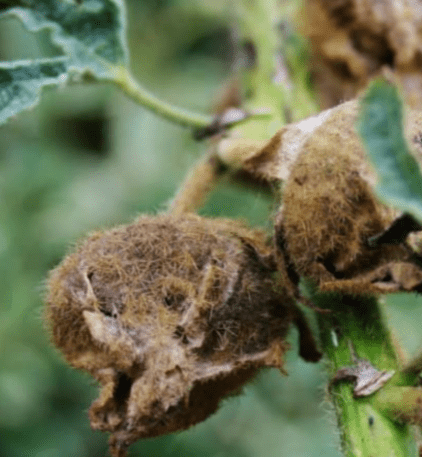
is a simple process that can help you to save seeds for future planting. Once the flowers on your hollyhock plant have bloomed and started to fade, you can start to harvest the seeds. Look for seed pods that have turned brown and feel dry to the touch. Use a pair of scissors or gardening shears to carefully snip off the seed pods from the plant. Place the seed pods in a paper bag or envelope and let them continue to dry out for a week or two.
After the seed pods have dried out, gently crush them to release the seeds. You can then store the seeds in a cool, dry place until you are ready to plant them. Harvesting hollyhock seeds allows you to continue growing these beautiful flowers in your garden for years to come. It’s a great way to save money on buying new seeds each year and to preserve the unique characteristics of your hollyhock plants.
Propagating Hollyhock Plants
is a great way to continue growing these beautiful flowers in your garden. Once the flowers have bloomed and started to fade, you can start to harvest the seeds. Look for seed pods that have turned brown and feel dry to the touch. Use scissors or gardening shears to carefully snip off the seed pods from the plant. Place the seed pods in a paper bag or envelope and let them continue to dry out for a week or two. After the seed pods have dried out, gently crush them to release the seeds. You can then store the seeds in a cool, dry place until you are ready to plant them. By propagating hollyhock plants, you can save money on buying new seeds each year and preserve the unique characteristics of your hollyhock plants. This is a great way to continue enjoying these beautiful flowers in your garden for years to come.
In conclusion, growing hollyhock plant seeds at home can be a rewarding and enjoyable experience. By following the steps outlined in this article, you can ensure that your hollyhock plants thrive and add beauty to your garden. Remember to provide the right soil, sunlight, and water for your plants, and to regularly monitor their growth and health. With a little care and attention, you can successfully grow hollyhock plants from seeds and enjoy a stunning display of colorful blooms in your garden.
Frequently asked questions And Answer
To plant hollyhock seeds, start by preparing the soil in a well-draining area with full sun. Sow the seeds directly into the soil, about 1/4 inch deep, and water them well.
Water the hollyhock seeds regularly, keeping the soil moist but not waterlogged. Once the plants are established, they are fairly drought-tolerant.
Hollyhock seeds typically germinate within 10-14 days, but it can take up to 3 weeks. Be patient and keep the soil consistently moist during this time.
Hollyhock plants can grow anywhere from 4 to 8 feet tall, depending on the variety. Be sure to provide support for taller varieties to prevent them from toppling over.
The best time to plant hollyhock seeds is in the early spring or late fall. They prefer cooler temperatures for germination and establishment.
Hollyhock plants benefit from regular fertilization and occasional pruning to remove spent blooms and encourage new growth. They are generally low-maintenance once established.
Yes, hollyhock plants can be grown in containers, but be sure to choose a large enough container to accommodate their height and provide adequate support.
Hollyhock plants can be susceptible to rust, a fungal disease that causes orange spots on the leaves. To prevent this, avoid overhead watering and provide good air circulation around the plants. Keep an eye out for aphids and caterpillars, which may also be attracted to hollyhocks.

